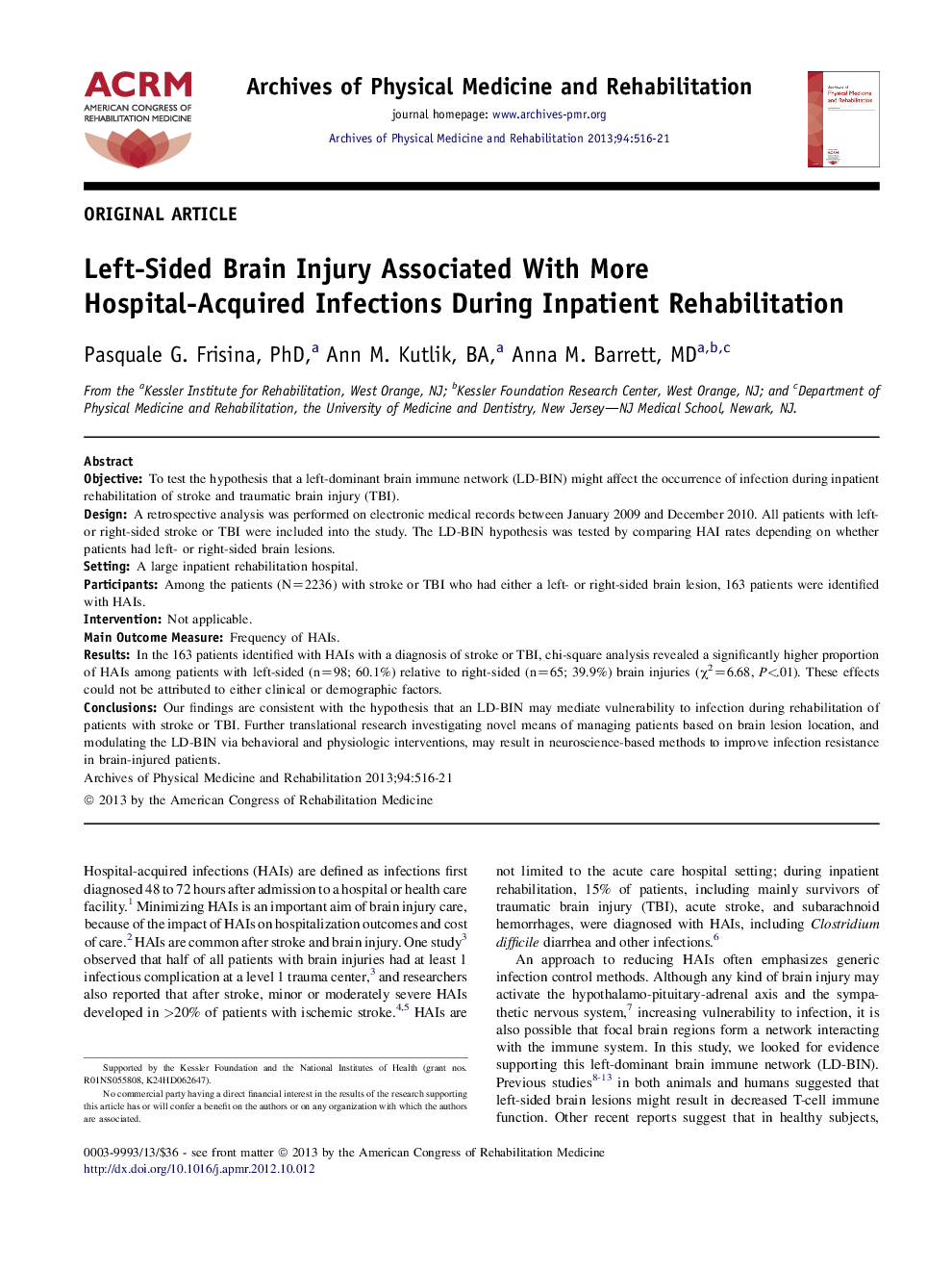| Article ID | Journal | Published Year | Pages | File Type |
|---|---|---|---|---|
| 3449254 | Archives of Physical Medicine and Rehabilitation | 2013 | 6 Pages |
ObjectiveTo test the hypothesis that a left-dominant brain immune network (LD-BIN) might affect the occurrence of infection during inpatient rehabilitation of stroke and traumatic brain injury (TBI).DesignA retrospective analysis was performed on electronic medical records between January 2009 and December 2010. All patients with left- or right-sided stroke or TBI were included into the study. The LD-BIN hypothesis was tested by comparing HAI rates depending on whether patients had left- or right-sided brain lesions.SettingA large inpatient rehabilitation hospital.ParticipantsAmong the patients (N=2236) with stroke or TBI who had either a left- or right-sided brain lesion, 163 patients were identified with HAIs.InterventionNot applicable.Main Outcome MeasureFrequency of HAIs.ResultsIn the 163 patients identified with HAIs with a diagnosis of stroke or TBI, chi-square analysis revealed a significantly higher proportion of HAIs among patients with left-sided (n=98; 60.1%) relative to right-sided (n=65; 39.9%) brain injuries (χ2=6.68, P<.01). These effects could not be attributed to either clinical or demographic factors.ConclusionsOur findings are consistent with the hypothesis that an LD-BIN may mediate vulnerability to infection during rehabilitation of patients with stroke or TBI. Further translational research investigating novel means of managing patients based on brain lesion location, and modulating the LD-BIN via behavioral and physiologic interventions, may result in neuroscience-based methods to improve infection resistance in brain-injured patients.
